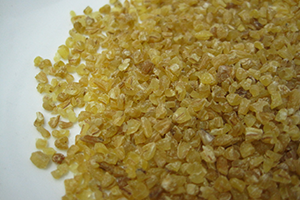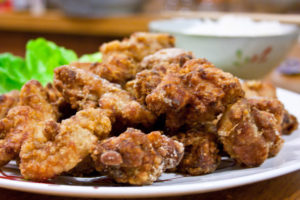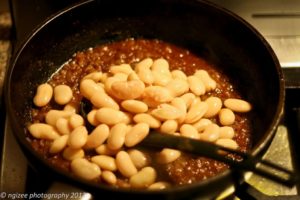
¡Buen provecho! Enjoy it!
Mexico! Lovely people. Delicious food. Amazing history and landscape. So much to love.
If you have travelled to Mexico there are two truths you will have encountered: tortillas – the corn and sometimes wheat-flour flatbreads that come with every meal – and beans, from a light spread on a tortilla before it’s bent into a taco to half your plate covered with delicious refried beans ready to be scooped up with said tortillas, cooked and minced beans are everywhere in Mexico.
And hot sauce! And avocados! And stringy, salty cheese! My mouth is watering as I write this. Ok let’s get on with it.
Mexico is a very large country so for today we will stick with some basics and later on we will investigate more thoroughly.
And please note that we are doing Mexican food and not Tex Mex. Tex Mex food is the Americanised version, that includes fajitas and hard shell tacos. Tex Mex is also very delicious but for today we’re sticking south of the Rio Grande.
The Mexican pantry
Corn – along with beans they are a staple of the Mexican diet for thousands of years. It is a different variety to the sweet corn we have outside Mexico.
Hominy – is corn that has been treated so the skin and the germ come off and the kernels puff up*. You can buy it dried, in jars/cans, or frozen.
*fun fact – this process removes the skin and releases the niacin in the corn so our bodies can absorb the nutrition from the corn instead of it *ahem* only travelling through.
Hominy dried and coarsely ground into a flour makes a polenta-like porridge and thickens soups. If you are from the US you might know this porridge as grits.
Masa flour – is finely ground hominy used to make tortillas. It is gluten free with a denser, chewier, more substantial bite than wheat tortillas and more of a toasted corn taste.
*fun fact – tortillas are cut up and deep fried become corn chips!
Masa flour is also used to make the dough for empanadas and is also the main ingredient in tamales, the pastry/dumplings that are stuffed with different fillings and steamed in a corn husks. Tamales are a common street food all over Mexico and Central and South America.
Beans – this super healthy, unassuming ingredient has high protein, fibre and nutrition. The classic is the pinto beans but black turtle beans – frijoles negros – are commonly used too. Refried beans are beans cooked in water then placed into a frypan and mashed and then fried/stirred so that they lose moisture and develop into a thick paste.
Cheese – features in many dishes from the fresh crumbly fresh curdy queso fresco that is served on chilaquiles to anejo (literally means aged) that is salty and also sometimes crumbled onto chilaquiles and cotija. Oaxaca is famed for its stringy cheese balls and its the oaxaca cheese is great for melting.
Tomatillos – are used a lot, not only in salsa verde, of which they are the main ingredient, but in many other dishes as well. They are often referred to as green tomatoes but that’s not really true. The fruit grows encased in a little paper lantern and they are slightly sweet and mostly sour, and very crunchy when underripe. You can buy them fresh or in cans. If fresh peel off the paper and wash the stickiness off the tomatillos before preparing, (there is some internet alarm about ‘toxicity’ but it seems to be the sap, leaves and stems that are not consumed anyway, just like regular tomatoes).
Nopal – the leaves of this classic shaped cactus are de-thorned and used in stews, salads, sauces and even grilled on the barbeque.
Avocado – originated in Mexico and its creamy freshness is used in many dishes. Of course everyone knows guacamole so I don’t have to mention it.
Speaking of guacamole, is Beyoncé’s recipe the best?? And check Binging with Babish’s take on fish tacos which brings together refried beans, pico de gallo, roasted tomatillos, tortillas, guacamole and marinated, cooked fish.x
Condiments:
Every taqueria and Mexican restaurant will have a selection of these condiments to brighten up and personalise your dishes:
Chili sauces – Mexico is the home of chili sauces. Generally the darker red and oiler it is the hotter it is.
Limes – to add a little acid punch to your taco or other dish.
Sour cream – crema fresca to tone down the heat and add a fresh, dairy sourness.
Spices:
Mexican oregano – a relative of the lemon verbana rather than the Greek or Italian oregano. The flavour is oregano-ish but also a little citrusy.
Annatto seeds – are ground up and used in pastes and marinades, they are a main ingredient in Achiote paste used for cochinita pibil, tacos al pastor and many other recipes.
Hoja santa – meaning sacred leaf – is a herb with a complex flavour (has been described as eucalyptus, nutmeg, aniseed). The leaf is large and floppy and is sometimes cut and used as a garnish, but more often to wrap meat and fish before cooking, and cheeses and tamales to impart flavour. It is used as a fresh leaf and not dried. If dried is all you have available, it is hard to get outside Mexico, then rub it between your hands to crumble and release the oils before adding it.
Common spices to have on hand – cumin, coriander, cloves, cinnamon.
Chillies
Of course Mexican food is spicy!
Jalapeños – green chilies usually pickled in vinegar. They can be fresh and sprinkled onto dishes as well. They are not super hot on the scoville scale but definitely provide some bite.
Chipotle in adobo – chipotle is a smoke dried jalapeño and it is often prepared in an adobo sauce and sold in cans or bottles. A few of these in your mexican dish or salsa will make it more complex and smoky and add a definite “Mexican” flavour.
Fresh chillies – we already mentioned jalapeño but there’s also poblano, chilaca, mirasol, serrano, and bola.
Dried chillies – we already mentioned chipotle but there’s also ancho, pasilla, guajillo, chile seco, cascabel.
The last two lists are actually in the same order of chilli but in their different forms: jalapeño dried and smoked = chipotle, poblano dried and smoked is ancho, chilaca = pasilla, mirasol = guajillo, serrano = chile seco, and bola = cascabel.
Habanero – a special mention has to be made for habanero chilli which is used to flavour many salsas. It’s hot! Be careful and wear gloves when handling.
Rice – is more common in northern Mexico and tomato is often added, making it red.
Some more common ingredients are tomatoes, cilantro, onions. But i think we don’t need to get to the level where I encourage you to have salt and pepper on hand.
Vegetarians and Vegans
When we think about Mexican food it is doesn’t appear to be very veg-friendly. However, guacamole and corn chips, pico de gallo, refried beans and chile sauce are all good. (Beans can and tortillas can sometimes be prepared with lard so if you’re out it’s best to check.)
For tacos and other dishes it is possible to vegetarian and vegan-ise with delicious results. Take a close look at the tacos at the top of this article and it’s still hard to tell that they’re completely plant-based, from Charly’s Vegan Tacos in Yucatán.
Plant-based Mexican food generally uses non-traditional ingredients though like jackfruit, mushrooms, tofu, seitan and other meaty substitutes and it’s so delicious I think we might do a whole blog post on vegan tacos and other dishes. I’ll link it here once it’s done. For now there are a couple of links in the ‘Cooking pages we love’ section and the videos.
Gluten free cooking
Mexican food is gloriously gluten free if you stick with 100% corn tortillas and check any pre-made sauces for thickeners.
Check out our hand chosen Mexican recipes here to start cooking up a delicious Mexican feast.
Cooking pages we love
Jauja Cocina Mexicana this Youtube channel is mostly Spanish but look for playlists in English and some have English subtitles, but I think you can follow the recipes anyway.
Mexico in my Kitchen has beautiful recipes with easy to follow instructions. Mely Martinez is originally from Mexico but is living in the US and cooking and sharing the dishes she loves.
Chicano Eats is a beautiful website with lots of great recipes, and lots of bright, baked sweets, as well as a vegan section.
La Cocina de Leslie is a southern Californian woman living in Mexico and her lovely blog with lots of comfort food classics
Dora’s Table is full of healthy (mostly) and vegan (completely) recipes from this Mexican native now based in New York.
Gochujang Mamá wait! yes it’s true! Gochujang mamá is a Mexican-American woman married to a Korean so there’s a mix of Mexican, Korean and general other recipes. It all looks delicious.
Adriana Guillen makes vegetarian versions of her favourite Mexican classics. Also she has some great videos that deep dive into specific ingredients to give background and context.



